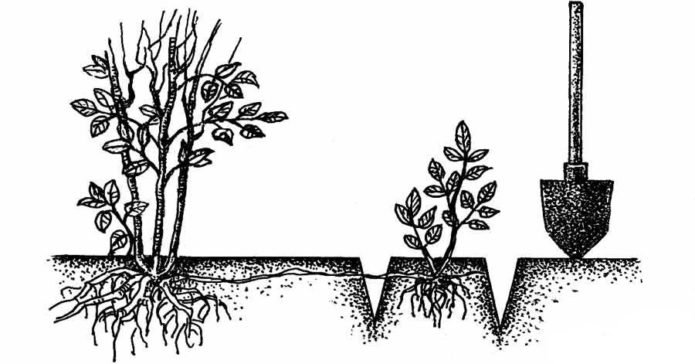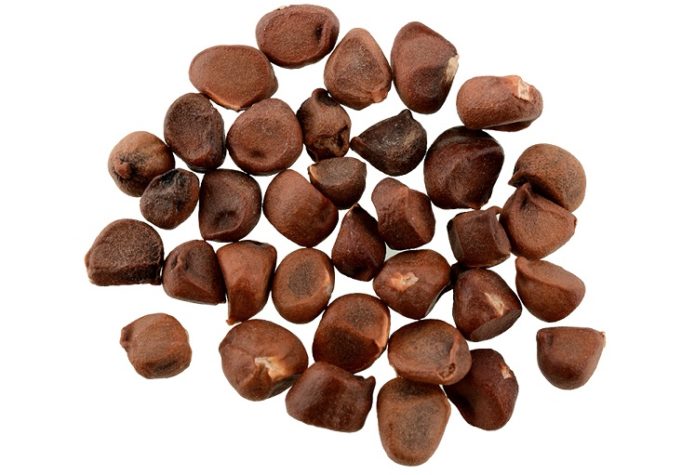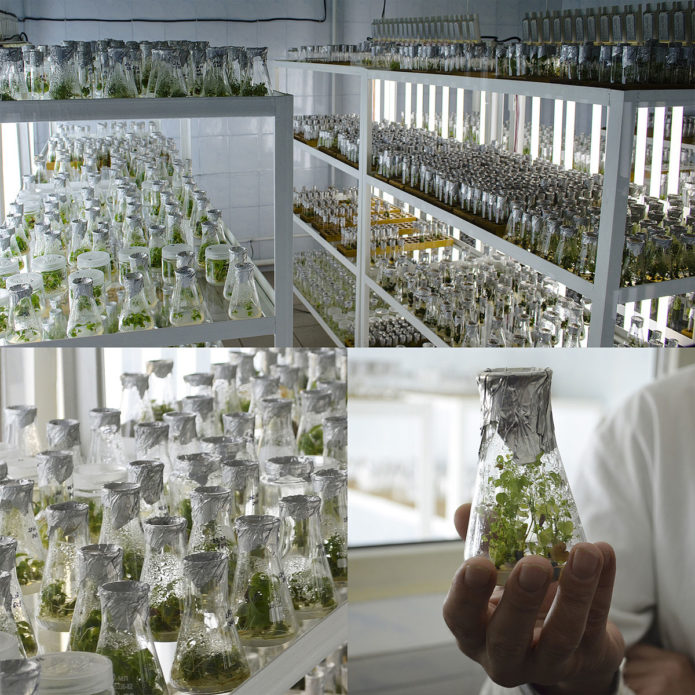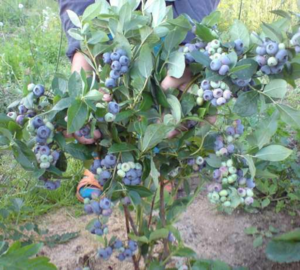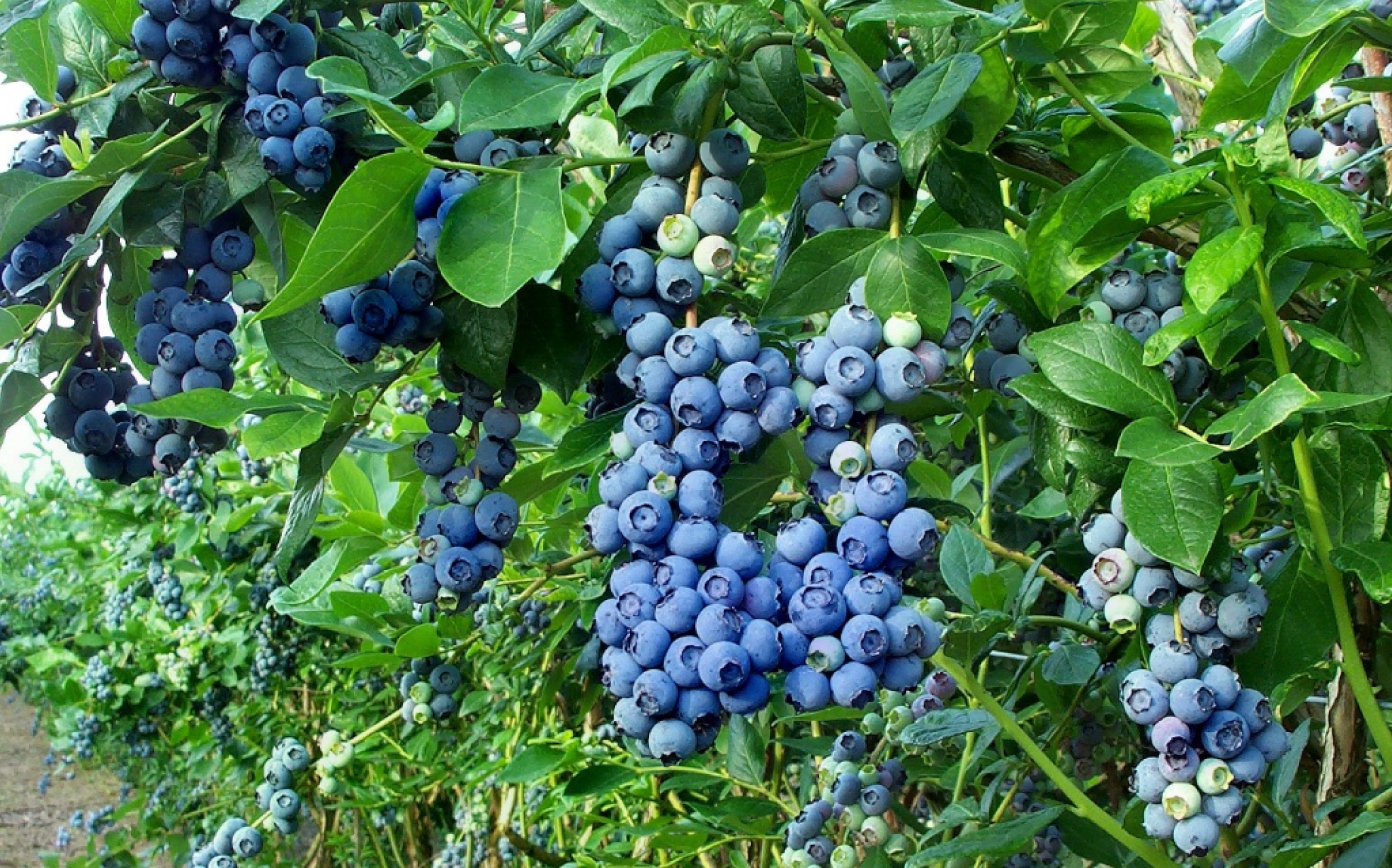The cultivation of garden blueberries has recently become quite a popular activity. But since its seedlings are quite expensive and it is not always possible to find them, the question of independent reproduction of blueberries is relevant. Consider in detail the possible options for obtaining seedlings of this plant.
Content
Reproduction of garden blueberries
Garden blueberries, including tall blueberries, can be propagated in all ways that shrub plants propagate.
Propagation by cuttings
Rooting cuttings and growing seedlings from them is a popular method of propagation of blueberries, which is suitable for all varieties, including tall ones. It is well known and successfully used by many gardeners and especially winegrowers.
Lignified
The procedure for obtaining seedlings by rooting lignified cuttings is as follows:
- In late autumn, when the plants have dropped their foliage and passed into a state of dormancy, branches are cut for future cuttings. They are chosen as one-year, fully ripe, shoots with a diameter of 0.5-0.8 cm.
- Cut branches are placed for storage in a basement with a temperature of 0— + 5 ° C, placed in damp peat or moss.
- In early spring, after the awakening of the plants (in March - April) cuttings 10-12 cm long with 4-5 buds are cut from the harvested branches. In this case, the lower cut is made perpendicular to the axis of the cutting immediately under the lower kidney. The upper cut is made 0.5-1 cm above the upper kidney. It should be oblique and directed downward from the kidney.
- From the lower end of the cutting to the height of two or three buds, two vertical diametrically opposite cuts of the bark, about 1 mm wide, are made with a sharp knife. It is easier for future roots to form on these sections.
- The lower ends of the cuttings (2-3 buds) are soaked for several hours in a solution of a growth and root formation stimulator.
- At this time, planting boxes with a mesh bottom are prepared, which are filled with a substrate prepared by mixing three parts of peat and one part of coarse river sand. The substrate layer should have a thickness of at least 15 cm, and the depth of the box should be 20 cm. Before planting, the substrate is moistened to the full depth by adding a complex mineral fertilizer for blueberries, for example, Forte, Florrovit, Dian Agro and others. The acidity of the soil should be at a pH level of 3.5-4.5, which can be checked using litmus paper or a special device (pH meter). It is even better to purchase ready-made blueberry soil that will meet all the necessary requirements.
- Cuttings are deepened into the substrate vertically, leaving 1-2 buds on the surface. They are arranged in rows at a distance of 5-10 cm from each other with an interval between cuttings in a row of 3-5 cm.
- The box is covered with foil and placed in a foil greenhouse or greenhouse. At the same time, it should be slightly raised above the ground to ensure soil ventilation. For the first 3-4 weeks, the boxes are shaded, creating diffused light for the cuttings.
- With the onset of warmth, when the cuttings are already rooted, the boxes are taken out into the garden, where they will stay until next spring. During the season, young plants are regularly watered, preventing the soil from drying out. The future seedlings do not yet need additional fertilizing, since they have enough fertilizer applied during planting.
- For the winter, the root system is insulated with mulch from a thick (10-15 cm) layer of coniferous litter, and the plants themselves are covered with spunbod.
- In early spring, seedlings are transplanted to a permanent place.
Video: rooting lignified blueberry cuttings
Green cuttings
Growing seedlings from green cuttings takes longer than from lignified ones. Moreover, they need more careful care, and their survival rate is lower. Therefore, this method is used when it is not possible to prepare the required amount of woody shoots for cutting cuttings. The procedure is as follows:
- Set up a small greenhouse with a film covering.
- Prepare a box with a substrate in the same way as in the previous method.
- In June, young green shoots are cut, capturing a small part of the main lignified stem ("with a heel"). With a certain skill, you can simply tear off the cuttings from the main shoot with a piece of bark with a sharp movement. The length of the finished cuttings should be about 15 cm. The lower leaves are cut off at a length of 10-12 cm, and the remaining ones are cut in half to reduce the evaporation area.
- After processing the cuttings with rooters, they are planted, deepening to the remaining upper leaves.
- The greenhouse is closed and slightly shaded. The temperature in it should be kept between 20-25 ° C. If, due to the heat, this does not work, then the greenhouse needs to be ventilated, and the soil around the box should be watered regularly to maintain high humidity. And you can also pour cold water on the greenhouse film - this will slightly reduce the temperature inside it.
- After rooting the cuttings (they are convinced of this by digging up the control specimens), the greenhouse is opened.
- For the winter, young plants insulate well, while ensuring air exchange of the substrate.
- In the spring, the seedlings continue to grow in boxes or are transplanted to a special bed (school).
- Plants will be ready for planting in a permanent place only next spring.
Root
This method is not used for tall blueberries, since they do not produce underground rhizome shoots, as they do for undersized blueberries, Eshi (twig-like) and marsh blueberries. From such shoots, you can get excellent rooting material. Reproduction of blueberries by root cuttings usually yields good results, and this is easy to do:
- A garden bed is being prepared in a slightly shaded part of the garden. Peat, sawdust, needles are added to the soil, complex fertilizer is added.
- In old bushes selected for propagation, overgrown roots are exposed and long rhizomes are cut off from them.
- These rhizomes are cut into cuttings 10-15 cm long so that each of them has a good, large, bud.
- Furrows are formed on the bed with a depth of 10-12 cm at intervals of 15 cm and are well moistened.
- Cuttings are laid out in the furrows, placing them bud upwards.
- The cuttings are covered with soil and re-watered.
- Above the bed, a shelter is made of arches covered with spunbond, which is removed after a month. By this time, seedlings should already appear. If this did not happen, then something went wrong (they missed the watering time and the cuttings dried up, overdid it with watering and the cuttings rotted, they were damaged by soil pests, etc.). To determine the reasons, you need to dig out a few roots and examine them.
- From the moment of planting to autumn, the soil is regularly watered, preventing it from drying out.
- By the end of the season, ready-made seedlings are obtained, which can either be planted in a permanent place, or left in the garden until spring, after having been mulched with peat and covered with spunbond.
Propagation by root shoots (partial bushes)
If growth appears from the horizontal roots of blueberry bushes, then it can be successfully used to obtain seedlings. For this, young shoots are separated with part of the root from the mother bush and planted in a pot or immediately to a permanent place.
And you can wait until the time when the shoots form young plants (partial bushes) that already have their own root system. In early spring or autumn, they are dug up, separated from the mother plant and planted in a container or on a garden bed.
Reproduction by dividing the bush
This method is used for all blueberry varieties. A bush that has several good shoots and a developed root system (this can be verified by carefully digging up the soil around the plant), can be divided into several parts and used as planting material. To do this, the selected bush is dug out of the ground and suitable shoots with a sufficient number of roots are carefully separated (their length should be at least 5-7 cm on each shoot), using a knife or pruner if necessary.
The obtained seedlings are examined and, if sick or damaged roots are found, they are cut off, after which they are immediately planted in a new place. In this case, the plants can be deepened by 10-12 cm for the formation of additional roots. After planting, they are watered abundantly and the branches are cut short (up to 15-20 cm).
Reproduction by cardinal pruning
This method is similar to the previous one, only a bush suitable for dividing is created purposefully. This is done by strong - almost root - pruning, which is carried out in early spring. After that, a double dose of complex mineral fertilizers is applied under the bush and covered with a thick (25-30 cm) layer of sawdust (you can mix the sawdust with garden soil in equal proportions). Cover the mound with a greenhouse. After a while, the shoots will grow, and roots form on the covered part. After their formation (which can be determined by careful digging in), the greenhouse is removed. Of course, the soil around the plant should be watered regularly, not allowing it to dry out.
After 2-3 years, young shoots with roots are separated from the mother bush and planted for growing or a permanent place.
Seed propagation
This is a way for patient gardeners who are ready to pay constant attention to sowing blueberry seeds, expect the first shoots to appear within 30 days, and the first berries - after 2-3 years. At the same time, the preservation of the varietal characteristics of the mother plant is not guaranteed. Therefore, this method cannot be called popular, although blueberry seeds are even sold for enthusiasts, which, according to some sources, remain viable for 10 years.
Seed preparation
If it was not possible to buy seeds, then you can collect them yourself from berries from your garden or from berries purchased in a store or at the market.For these purposes, the most ripe berries are suitable, which need to be crushed with your hands, rinse the resulting pulp in water, and then separate the seeds. Some of them will float to the surface, but for sowing, as usual, they leave those that have sunk to the bottom. After that, they are dried, spread out on a napkin, and placed in a paper bag for storage. When fully ripe, seeds are light brown and irregular in shape.
Seed preparation
Seeds are usually sown in March so that the plants can be planted in separate containers in mid-May. To do this, in December they need to be stratified, which will last 3 months. The seeds are placed in wet moss or peat, laid in a small container, and placed in a refrigerator, previously covered with a lid or foil. The temperature for stratification should be within + 1–3 ° C.
Sowing blueberry seeds in a container
You can sow blueberry seeds in a regular plastic food container. For this:
- The container is filled with a substrate and the seeds are simply spread over its surface.
- A layer of sand (1-2 mm) or sawdust (3-4 mm) is poured on top.
- Then the container is covered with foil or glass and placed on the windowsill on the sunny side of the apartment.
- The substrate is regularly moistened with a spray bottle, preventing it from drying out. Airing takes place at the same time.
- After emergence, the container is opened.
- When 3-4 true leaves appear, the plants can be transplanted into separate 500 ml glasses, in which they will remain until planting in a permanent place.
- Glasses should be outside until autumn. Care consists in regular watering, loosening the soil and shading the plants in case of extreme heat.
- For the winter, the glasses are transferred to an unheated greenhouse or to the veranda and covered with spunbond.
- In the spring of the second year, they are again taken out into the street, where they will remain until autumn. At this time, they will need to be fed with complex fertilizer.
With this method of propagation, seedlings completely ready for planting are obtained 2 years after sowing the seeds.
Sowing seeds in peat tablets
This method is most convenient for growing plants from seeds. Such tablets are produced by pressing peat. Each tablet is placed in a fine mesh to maintain its shape. Their thickness is usually 10-12 mm, and their diameter is from 16 to 72 mm. For sowing blueberries, tablets with a diameter of 25-40 mm are suitable. They are used like this:
- The tablets are soaked in water, as a result of which after a while they will swell and increase by 6-7 times in height. In this case, the diameter increases slightly.
- After that, they are placed in a tray or a special container with cells, into which water (melt, rain, bottled, or settled water) is poured in a layer of 1-2 cm.
- In the recess of the upper end of the tablet, 2-3 seeds are placed and sprinkled with peat. After the emergence of shoots and the formation of 2-3 true leaves in each tablet, select one, the strongest growth, and the rest are removed.
- Moisten the surface of the tablet from a spray bottle.
- Further care is the same as in the previous method, the only difference is that they are transplanted into glasses together with peat tablets, slightly (1-2 cm) deepening at the same time.
Reproduction by layering
This method, effective for the propagation of currants, gooseberries and other crops, does not work very well in the case of blueberries. When laying individual blueberry branches on the ground, backfilling them with a layer of sawdust and regular moistening, the roots may appear (or may not appear) only after 2-3 years. After that, the rooted layers are separated from the mother plant and planted in a school for growing.After 1-2 years after that, the finished seedlings are planted in a permanent place, and the first harvest will have to wait the same amount. In view of such a long duration of achieving the result, the method is unpopular and not recommended for use.

After backfilling the blueberry stem with earth for the purpose of rooting, the roots are formed no earlier than 2-3 years
Micropropagation of garden blueberries
This is an innovative method of plant propagation, which has been developed by scientists in various countries over the past century. Currently, he is starting to enter the industrial rails and bring excellent results. Briefly about the essence of the method. It consists in obtaining a large number of clones from a small amount of biomaterial of a propagated plant in laboratory conditions using a special technology (in-vitro technology, which in Latin means "in vitro"). In the next step, the shoots obtained are rooted in hydroponic installations and grown in greenhouses until ready for planting. Seedlings grown using this technology can already be found in Russia, Ukraine, Belarus, Europe and America. The main advantage of such seedlings, from the point of view of the consumer, is the fact that they are completely free from diseases and viruses, genetically homogeneous and guaranteed to retain varietal characteristics. It is clear that the use of this method is not available to ordinary gardeners.
Features of the reproduction of garden blueberries in different regions
Blueberries are successfully grown in the CIS countries, including Belarus, Kazakhstan, and Ukraine. In Russia, it is bred in almost all regions of the northern and middle zone, in the Urals, Siberia and the Far East. But if the growing conditions, planting and care differ depending on the region, then the methods and rules for breeding this berry are the same for all regions and may differ only in minor nuances.
In Belarus
The natural conditions of Belarus predispose to the cultivation of blueberries, therefore they are grown throughout the country. All the methods described are used to one degree or another by local gardeners, and the development of the microclonal reproduction method has been brought here to the state level - the team of the Botanical Garden of the Agricultural Academy of Sciences is constantly working on it.
Video: about the method of microclonal reproduction of blueberries in Belarus
In central Russia
Frosty winters prevail in the climate of this region, sharp fluctuations in temperature and thaws are possible. Seedlings are planted here in mid - late April, at the same time, after wintering, boxes with green cuttings rooted in the last season and boxes with germinated seeds are taken out into the street, greenhouses are opened. For wintering, plants are sent out at the end of October - November.
In the Urals and Siberia
The climate of the Urals and Siberia is known for its harshness, long winters and short summers. Especially for Siberia, winter-hardy blueberry varieties have been bred, which successfully grow in taiga regions:
- Yurkovskaya;
- Taiga beauty;
- Iksinskaya;
- Wonderful, etc.
But when they reproduce, one cannot do without tunnel greenhouses, covered with film and spunbond, or greenhouses. And also warm beds are good at the same time.
The most convenient and effective way of propagation of blueberries available to the average gardener is by rooting lignified, green and rooted cuttings. These methods are popular and can be recommended for use. And when purchasing ready-made seedlings, it is worth looking for those grown industrially by the method of microclonal reproduction, since among others they have the best qualities, including the absence of infections and diseases.




